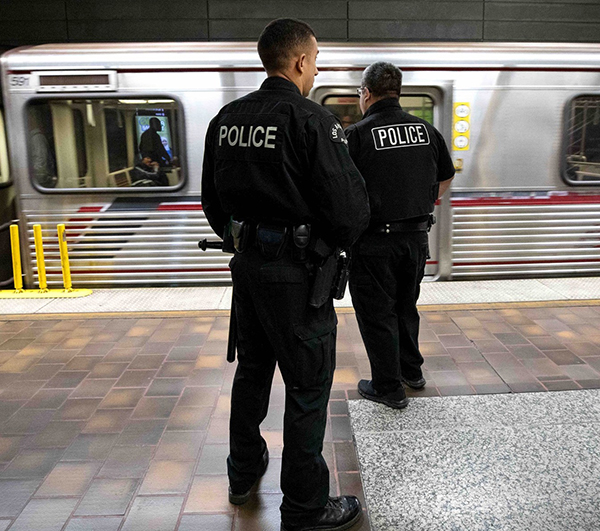Wave Wire Services
LOS ANGELES — The Metropolitan Transportation Authority will develop a plan for an in-house public safety department to be presented to the Board of Directors for approval in January 2024.
The MTA board approved a motion June 22 instructing the chief executive officer to prepare a comprehensive implementation plan for board consideration.
The plan will reflect the agency’s commitment to “building a new culture, public safety, centered on a robust multi-layered approach,” outgoing board Chair Ara Najarian said.
Prior to the vote, Gina Osborn, chief safety officer, provided a presentation on the feasibility of establishing an in-house public safety department within the transit agency.
With regard to strengths, Osborn said an in-house public safety department would result in engaged visibility; cultural alignment with the MTA’s values; increased transparency and response time to crimes or other crises; dedicated staffing and improved fiscal sustainability.
“Prior industry studies and assessments reflect that the cost of an in-house transit police department in the U.S. is typically 20% to 40% less than contract police services,” Osborn said.
The feasibility study indicated that the estimated budget for a safety department would be $135.4 million, 21.7% less than the $172.9 million that the MTA currently has budgeted for policing contracts in the 2023-24 fiscal year.
“This approach will not only create a stronger and more efficient safety framework but also allow [the MTA] to reallocate resources in a proactive and cost-effective manner that aligns with the agency’s safety priorities,” Osborn added.
Weaknesses in an in-house safety department include liability, staffing shortages in law enforcement personnel, as well as training specialized units like SWAT, she added.
Osborn emphasized that the motion to develop an implementation plan for an in-house public safety department would outline an operating framework, create a strategic plan for the department’s goals and objectives, establish an organizational structure and more.
Board members approved the motion in an-almost unanimous vote — as county Supervisor Janice Hahn abstained from the vote.
Hahn was critical of the motion, saying it was a “big shift” from talking about the “perception” of having public safety issues to implementing an in-house public safety department.
She noted that the agency’s law enforcement partners — the Los Angeles County Sheriff’s Department, Los Angeles Police Department and the Long Beach Police Department — would “probably be blindsided by this move.”
“I just wanted us to get there in a way that made me more comfortable about making this decision that I am pretty sure the will of this board is going to go ahead and implement this strategy,” Hahn said.
Mayor Karen Bass, who also sits on the board, noted that Hahn was right in regards to law enforcement being unaware of the motion. Bass stated she would be meeting with LAPD Chief Michel Moore to discuss the implications of the motion.
“I know that with LAPD officers, [bus duty] was an opportunity for overtime,” Bass said. “It’s going to be important to look at that and figure out how that is dealt with.”
Bass, who supported the motion, said she “never understood” how the agency contracted three different agencies and “three different ways of policing.”
“So, it’s a real opportunity to take a very, very bold step,” Bass said. “But I agree with you Supervisor Hahn, we have to have community input. We have to talk about exactly how we go about this.”
The board’s decision to move forward in developing an implementation plan for an in-house public safety department stems from financial concerns and challenges identified in a 2022 audit report from the Office of the Inspector General.
According to the MTA, over a six-year period starting in 2017, law enforcement contracts cost the agency approximately $911.9 million. In addition, the audit report found that 54% of LAPD calls for service involving the MTA were left unanswered by neighborhood patrol units, and not the LAPD officers assigned to the MTA at the time of the call.
While the agency identified those challenges regarding deployment, the board voted in March to continue negotiations and extend contracts with the three law enforcement agencies. Staff noted that the MTA made revisions to the statements of work to include a provision in which police agencies would fall in compliance with the MTA’s bias-free policing policy and public safety analytics.
MTA staff members said two of the three law enforcement agencies agreed to the revisions.
County Supervisor Lindsey Horvath, who also serves on the MTA board, emphasized the motion only authorizes staff to develop a plan that will come back to the Board for approval.
“I know that through this process, we’ll be looking at national and international best practices, and what resources are required in terms of personnel, in terms of dollars and cents, and in terms of training and expertise,” Horvath said.









